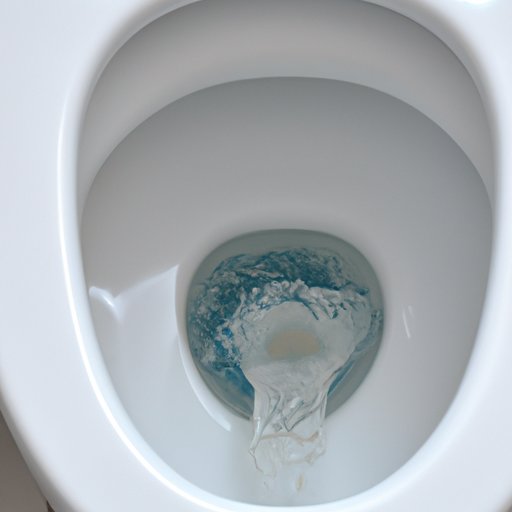I. Introduction
There are few things more frustrating than a toilet that won’t flush. If you’re experiencing this issue, you’re certainly not alone. Non-flushing toilets are a common problem that can be caused by a variety of issues. But don’t worry – with a little bit of knowledge and troubleshooting, you can get your toilet flushing normally again in no time. The purpose of this article is to help you troubleshoot and, if possible, solve the problem yourself.
II. A Step-by-Step Guide on How to Troubleshoot a Non-Flushing Toilet
One of the most common reasons your toilet might not be flushing is an issue with the flapper. The flapper is a rubber valve that seals the bottom of the tank and controls the flow of water into the bowl.
If the flapper is damaged or worn, it won’t form a tight seal. This can result in a weak flush or no flush at all. To fix this, you’ll need to remove the tank lid and inspect the flapper. If it’s damaged, simply replace it with a new one.
Another common cause of a non-flushing toilet is an issue with the handle. This could be because the handle is disconnected from the flapper chain or because the chain is too loose or too tight. To fix this, you’ll need to reattach the chain or adjust its length.
If neither of those solutions works, there could be clogging in the bowl or pipes. This can be caused by anything from excessive toilet paper to foreign objects. To fix this, you’ll need to use a plunger or plumbing snake to remove the obstruction.
III. The Science Behind Toilet Flushing
Have you ever wondered how toilets work? When you push the handle, the flapper opens and water rushes from the tank into the bowl. This creates a powerful suction that pulls waste and water down the drain and into your home’s plumbing system.
The tank is responsible for storing a reserve of water that is ready to be flushed into the bowl at a moment’s notice. The bowl is designed to hold a small amount of water, which serves as a barrier between the bathroom and the plumbing system.
The flapper plays a critical role in regulating the flow of water. When it is closed, it prevents water from flowing out of the tank. When it is open, it allows water to flow into the bowl, creating the flushing action.
IV. Funny Anecdotes About Toilet Mishaps
While toilet flushing issues can be frustrating, sometimes it helps to take a step back and laugh at the situation. We’ve all been there – maybe you’ve accidentally flushed something you shouldn’t have, or experienced a particularly embarrassing mishap in a public restroom.
While these stories might seem embarrassing at the time, they’re often just part of the human experience. If you’re feeling down about your non-flushing toilet, take comfort in knowing you’re not alone.
V. Top 10 Reasons Your Toilet Isn’t Flushing
Here are the top 10 reasons why your toilet might not be flushing:
- A faulty flapper
- A disconnected or poorly adjusted handle
- Clogging in the bowl or pipes
- An issue with the fill valve
- A low water level in the tank
- A worn or damaged flush valve
- A clogged vent pipe
- A broken or corroded sewer line
- A misaligned flapper chain
- An issue with the water pressure in your home
VI. How to Maintain Your Toilet to Prevent Flushing Issues
One of the best ways to prevent flushing issues is to properly maintain your toilet. Here are a few tips:
- Regularly clean your toilet to prevent clogs and buildup. Use a toilet bowl cleaner and a scrub brush to clean the bowl and disinfect
- Avoid flushing anything that isn’t toilet paper or human waste. Don’t flush wipes, feminine products, or other items down the toilet as they can cause clogging
- Install a toilet bowl liner to reduce buildup and make cleaning easier. These can prevent stains and rings from forming in the bowl and extend the life of your toilet
- If you notice any early warning signs of a potential issue – such as a weak flush or strange noises coming from the tank – address them promptly to prevent larger issues from developing
VII. Conclusion
A non-flushing toilet can be a major inconvenience, but with a little bit of knowledge and troubleshooting, you can often solve the issue yourself. Whether it’s a problem with the flapper, handle, or clogging in the pipes, there are several potential causes of a non-flushing toilet. By following the tips in this article, you’ll be able to better identify and solve the problem.
Remember to take proper care of your toilet and use it correctly to prevent future flushing issues. By doing so, you’ll help ensure your bathroom remains a comfortable and functional space for years to come.
